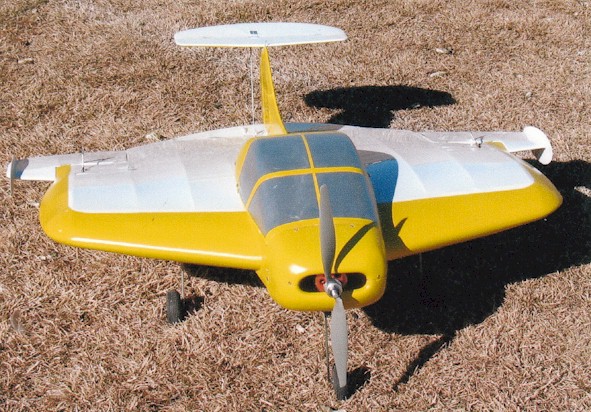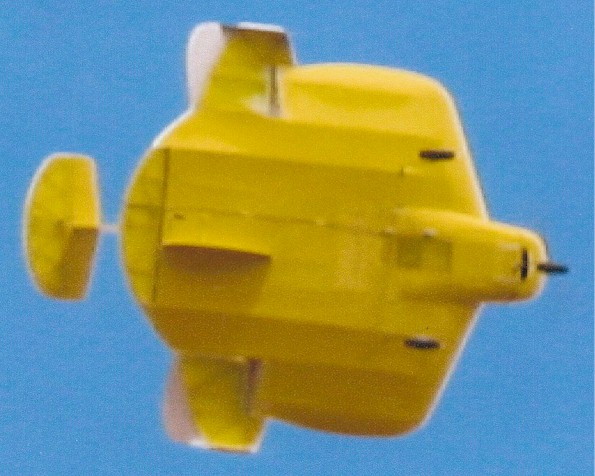March 2009
.......After a bunch testing and modifying, I decided that the ARUP and VoughtChance guys had been where I was and had come up with some successful solutions. So I stole the high placement of the elevator from The ARUP and the jutting ailerons from the (V-C) XF5U Skimmer. I moved the ailerons forward so I could fold the wings. The center section is 6 feet wide and the outer wings, including the jutting ailerons, are 5 feet wide. The outer wing panels will fold over the center section like the Dyke Delta.
.......Photos 1 and 3 show the model's original configuration. I convinced some expert RC pilots to fly it. They were amazed by how well this 'weird' airplane flew. It was quite maneuverable and also quite stable. If they held the controls stationary (banking position) the model would hold that attitude and altitude throughout the turn. In a typical power off stall condition it would simply drop its nose before any control surface stalled. With power on the model would go into a slow 'torque' roll that could be stopped quickly with aileron control before anything stalled. Landing gave my experts some difficulty because they were quite different than the usual thin winged model. The experts were used to gliding in low and fast. The LARA would glide into its ground effect level and sail along another 30-40 feet before settling gently onto the ground. We had a few PIO's before they followed my yelped directions.
.......The behaviors that bothered my experts were; a slight fishtailing and rolling in gusty conditions and a tendency to zoom when power and/or speed was increased. Photo 4 shows the ventral fin that didn't work and photo 2 barely shows the flow dam between the cockpit and the rudder fin that did. The end plates didn't do anything we could measure but stiffening the aileron's fittings and increasing their areas (photos 4and 5) improved all aspects of roll effectiveness. More down thrust cured the zooming.
.......We spent our last flight testing the model's ability to recover from unusual attitudes. We put the model through loops, rolls, hammer head stalls, inverted flight, etc. The model performed well. It was not as quick or precise as the classic aerobatic models but it was more than adequate. We were surprised that it flew well inverted with only a small elevator correction.
.......I realize that scale models are only indicators of how the full size airplane MIGHT behave and should be considered with reservations. The aerodynamic behavior of the model so closely mimics that of the full size aircraft I have researched that I am now constructing a 1/5 structural model out of 1/8" wooden dowels and scraps. .......This will give me some ideas about where and how the parts will go together. This model will be followed by a full size mockup of cheap steel tubing that should finalize the structure of flying prototype.
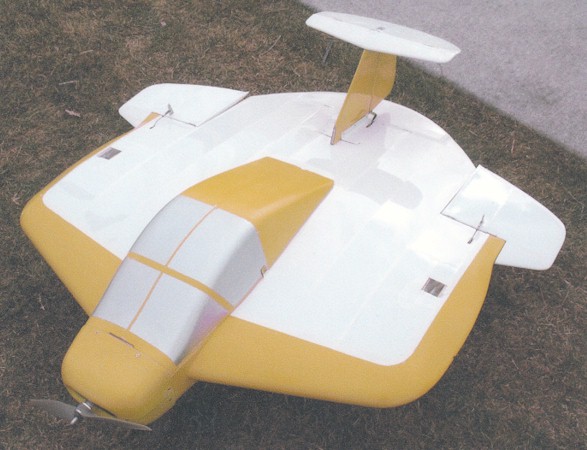
#1
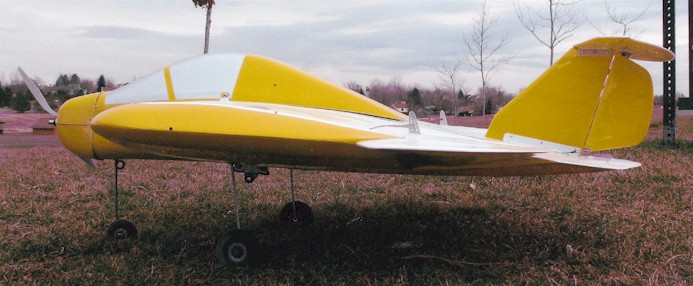
#3
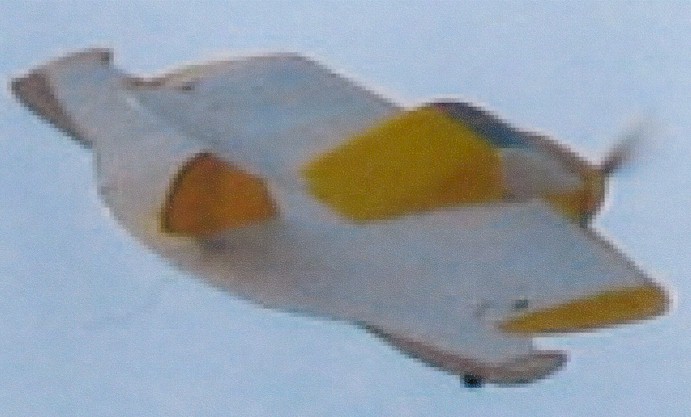
#5
HOME............................Back to Index
